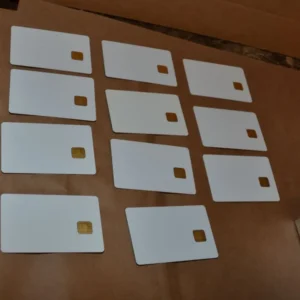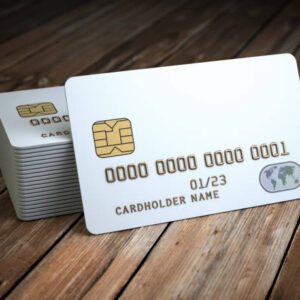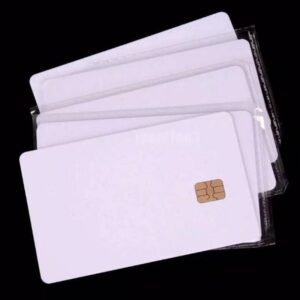CLONED CARDS
CLONED CARDS
CLONED CARDS
Clone Cards: A Comprehensive Guide to Technology, Uses, and Security
Introduction
The digital world is being revolutionized by clone cards, which provide users with unprecedented access, convenience, and control. Furthermore, versatile solutions are offered to various industries, including finance, security, and entertainment, through card cloning technology. Whether the technology is being explored by tech enthusiasts, professionals, or curious individuals, informed decisions can be made by understanding how cloned cards function and are utilized. Moreover, digital credentials and transactions are actively transformed by the widespread adoption of card clones.
Specifically, a comprehensive overview is provided in this guide, covering what card cloning entails, how cloned cards operate, and the best practices for their legal and safe use. Seamless financial transactions, secure access control, and enhanced gaming experiences are enabled by cloned cards. In addition, the growing role of cloned cards in digital innovation emphasizes the importance of staying informed about card clone technology for those involved in technology or security fields.
What Are Clone Cards?
Clone cards, also known as replicas or duplicates, represent advanced programmable cards designed to replicate the functions of original cards, such as credit cards, debit cards, RFID access cards, and more. These cards mimic magnetic stripes, EMV chips, or NFC technology, enabling users to operate them just like the originals. Moreover, clone cards offer a flexible and cost-effective solution for managing multiple accounts or access permissions.
In addition, the technology behind clone cards has evolved significantly, allowing for higher accuracy and enhanced security features. For example, programmable cloned cards can store multiple profiles, making them ideal for professionals who need to switch between different credentials quickly. Therefore, understanding how clone cards function and their applications is essential for anyone interested in digital security or card technology.
How Does Card Cloning Technology Work?
Card cloning involves copying data stored on a physical card to a new, programmable card. Specifically:
-
Magnetic Stripe Cloning: Devices called skimmers copy data from the stripe.
-
Chip Cloning (EMV): Experts extract chip data using advanced tools.
-
NFC Cloning: Wireless technology copies contactless data from RFID or NFC-enabled cards.
Afterward, specialists program clone cards using specialized software and devices, making fully functional replicas.
Different Types of Clone Cards Explained
-
Magnetic Stripe Clone Cards: These cards replicate magnetic stripe data from traditional cards.
-
Chip-Based (EMV) Clone Cards: They clone encrypted chip data for more secure transactions.
-
NFC/RFID Clone Cards: These enable contactless interactions and suit secure facility access and mobile payments.
Main Features of High-Quality Clone Cards
-
High Accuracy: Cloned cards replicate original card functions with precision.
-
Custom Programmability: Users customize settings and functions to meet specific needs.
-
Portability: Their compact design suits mobile professionals and travelers perfectly.
-
Security Protocols: Modern clone cards support encryption to protect sensitive data.
Best Uses for Clone Cards in Daily Life
-
Financial Transactions: Manage multiple bank accounts, make purchases, and withdraw cash easily.
-
Access Control Systems: Securely enter buildings, offices, or facilities using cloned access cards.
-
Identity Verification & Authentication: Store ID credentials for professional or governmental use.
-
Gaming, Entertainment & Digital Profiles: Clone cards store in-game data, enhancing user experience.
Choosing the Right Clone Card for Your Needs
To choose a clone card wisely, consider:
-
Purpose: Do you need it for payment, access, or verification?
-
Technology: Do you require magnetic, EMV, or NFC capabilities?
-
Security: Prioritize cards that offer encryption and authentication support.
Where to Buy Replica and Clone Cards Online
Several online stores offer a wide range of replica cards. Our online store provides various replica cards tailored to different needs, including financial transactions and access control. We guarantee all products meet the highest quality and latest security standards. Visit our store today to find the clone card that best suits your requirements.
Essential Clone Card Reader Devices and Software Tools
You need reliable tools and software to create functional clone cards. Important devices include:
-
Magnetic Stripe Writers/Encoders: Read and write data on magnetic stripe cards.
-
EMV Card Readers: Read chip data from smart cards.
-
NFC/RFID Writers: Program contactless cards.
-
Clone Card Software: Manage data extraction and card configuration.
Always buy these tools from reputable vendors to ensure compatibility and security.
How to Use Clone Cards Legally, Safely, and Ethically
Follow these best practices to avoid legal or ethical issues:
-
Use clone cards only for authorized and personal purposes, such as backups or internal access testing.
-
Never clone another person’s card or data without permission.
-
Follow local regulations and comply with standards like PCI DSS.
-
Disclose clone card usage when required in institutional environments.
Step-by-Step Instructions: How to Clone a Card (For Educational Purposes Only)
-
Choose the right clone card type (magstripe, EMV, or RFID).
-
Acquire the necessary tools: a reader/writer and related software.
-
Extract card data using your reader.
-
Open cloning software and import the extracted data.
-
Write data to a blank programmable card.
-
Test the clone card to verify proper functionality.
Note: Use this knowledge responsibly and stay within legal limits.
Cloned Cards vs. Original Bank and Access Cards: Key Differences
| Feature | Cloned Cards | Original Cards |
|---|---|---|
| Functionality | Mirrors original behavior | Issued by authorized institutions |
| Legality | Legal if used appropriately | Fully legal and authorized |
| Customization | Fully programmable | Limited customization |
| Security | Depends on configuration | Backed by issuing authorities |
| Cost | Generally cheaper | Often higher fees |
Cloned cards serve specific use cases but never replace original authorized cards.
Best Practices for Clone Card Security and Protection
Cloning technology evolves, and so do security countermeasures:
-
EMV Chips: These chips resist cloning better than magnetic stripes.
-
Biometric Authentication: Fingerprint and facial recognition add security layers.
-
AI Fraud Detection: Banks use algorithms to detect and block suspicious activity quickly.
Risks, Regulations, and Legal Considerations of Clone Cards
Using cloned cards fraudulently breaks the law. Legal uses include:
-
Creating personal backups of authorized cards.
-
Managing corporate identity or access controls.
Check local laws and standards such as PCI DSS and intellectual property rights before use or distribution.
What’s Next? The Future of Clone Card Technology
The next generation of cloned cards will likely include:
-
Blockchain Technology: Ensures transparent, tamper-proof transactions.
-
Biometric Features: Improves user authentication security.
-
IoT Integration: Enables clone cards to communicate with smart devices.
Tips for Consumers: How to Prevent Card Cloning Fraud
Stay safe by following these tips:
-
Regularly monitor bank accounts for unauthorized activity.
-
Use EMV chip cards with biometric protection.
-
Avoid insecure or unfamiliar devices when making transactions.
-
Always inspect ATMs and point-of-sale terminals for skimming devices.
-
Enable SMS or app notifications for transaction alerts to detect suspicious activity early.
Technical Guide: Tools and Software Used in Card Cloning
Professionals use various devices and software to:
-
Extract data from source cards.
-
Encode programmable clone cards.
-
Test functionality and security thoroughly.
Key tools include: -
MSR605 Magnetic Stripe Reader
-
ACR38 EMV Card Reader
-
Proxmark3 for RFID/NFC cloning
-
Clone card suite software (e.g., Mifare tools, EMV applets)
Understanding these tools helps users operate ethically and securely.
Conclusion: Making Informed Decisions About Card Cloning
Card cloning offers significant benefits across the finance, security, and technology sectors. However, users must employ them responsibly and understand legal restrictions. As technology advances, cloned cards will offer even more secure, flexible, and innovative solutions.
Frequently Asked Questions (FAQs)
What are clone cards used for?
They replicate credit, debit, or access cards for convenience, testing, or personal use.
Are clone cards legal to use?
Their legality depends on your location and purpose. Authorized testing, personal backups, or approved access replication remain legal.
Can clone cards be programmed for multiple uses?
Yes, programmable clone cards can store multiple profiles or functionalities.
How do I protect myself from card cloning?
Use EMV-chip cards, enable transaction alerts, and avoid unverified ATMs or terminals.
Where can I buy secure cloned cards?
Purchase only from verified sources that comply with safety and legal standards.





